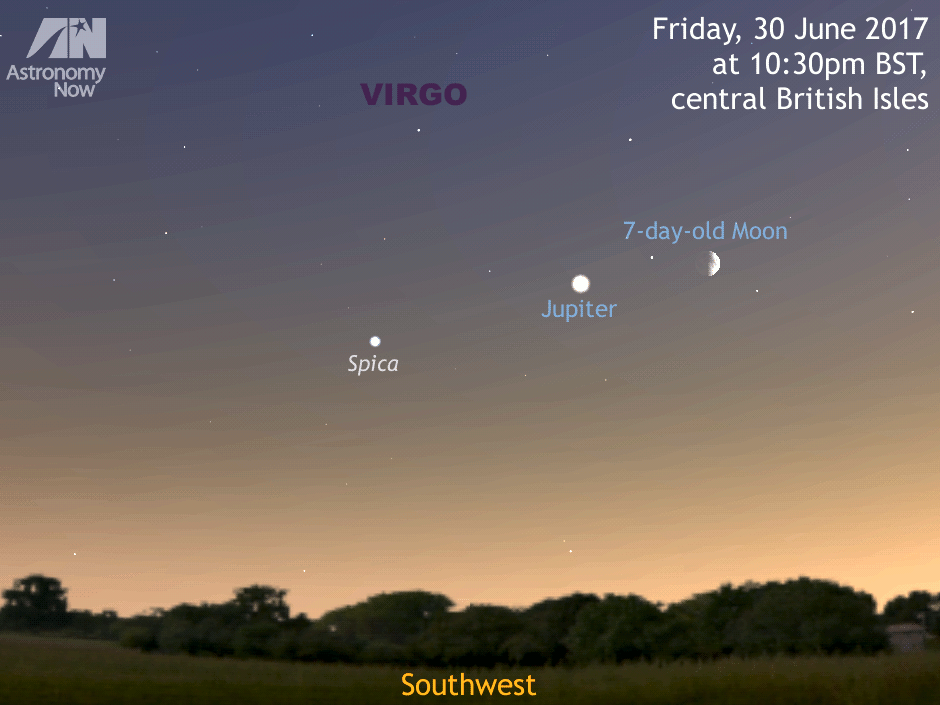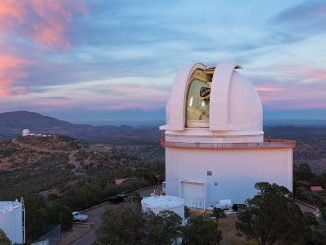
If you find it hard to locate Jupiter in the bright sky around civil dusk, a convenient celestial marker in the form of the almost first quarter Moon sits just 6½ degrees to the right on the planet on the evening of Friday 30 June. The pair can fit in the same field of view of wide-angle 7× binoculars.
One night later, the 8-day-old Moon lies 6.4 degrees to the upper left of Jupiter, forming an almost isosceles triangle with first-magnitude Spica, the brightest star in the constellation of Virgo. Jupiter and Spica are 10⅔ degrees apart at this time, roughly the span of a fist at arm’s length.
If you are successful in catching a glimpse of the changing configuration of this celestial trio on the nights of 30 June and 1 July, reflect on the knowledge that Jupiter (distance 491 million miles, or 790 million kilometres) lies about 2,000 times farther away than the Moon. And at a distance of about 250 light-years, Spica is a staggering 3 million times more distant than Jupiter!



